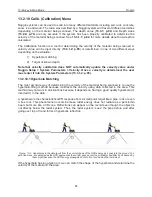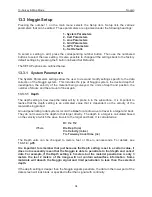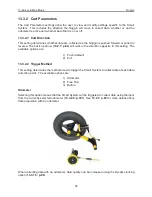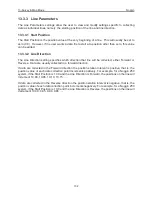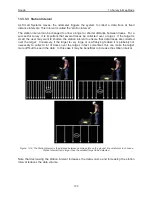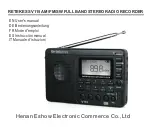
13-Survey & Map Mode
Noggin
96
13.3.1.4 Noggin System
The Noggin System should be set to the type of Noggin currently in use on the Smart System.
The Noggins available are:
1) Noggin 100
2) Noggin 250
3) Noggin 500
4) Noggin 1000
13.3.1.5 Stacks
Some materials tend to absorb radar signals and limit penetration. These materials are said to be
lossy. When collecting data in lossy areas or areas with a lot of radio frequency noise, one way of
increasing data quality is to collect more than one trace at each survey position, average them
and save the averaged trace. This is known as “stacking”. Data quality improves because the
noise, which is usually random (like white noise on a TV screen with no station in the area), tends
to zero when averaged. Consequently, the usable signal is easier to see. This is known as
increasing the “signal-to-noise ratio”.
Figure: 13-7 The concept of stacking data. At each data location point, the trace is collected multiple times. These
traces are averaged together to calculate the trace that is actually saved. Stacking improves the data quality by
increasing the signal to noise ratio.
While stacking improves data quality, it may slow down survey production. The more stacks, the longer it
takes to collect data at each survey position. Therefore, it is important to find the optimum number of
stacks that still reveal the target adequately. For most surveys, stacking 4 times is suitable.
See the warning in
13.2.7: p.82
about losing data if the Smart System is moving too quickly for
the odometer to keep up.
Содержание Noggin 100
Страница 1: ...User s Guide Copyright 2012 Sensors Software Inc 2011 00022 02 Noggin ...
Страница 2: ......
Страница 4: ......
Страница 8: ......
Страница 17: ...Noggin 2 Noggin Components 3 Figure 2 3 Noggin 100 components ...
Страница 156: ...Appendix D Instrument Interference Noggin D 2 ...
Страница 158: ...Appendix E Safety Around Explosive Devices Noggin E 2 ...
Страница 162: ...Noggin G 4 ...







